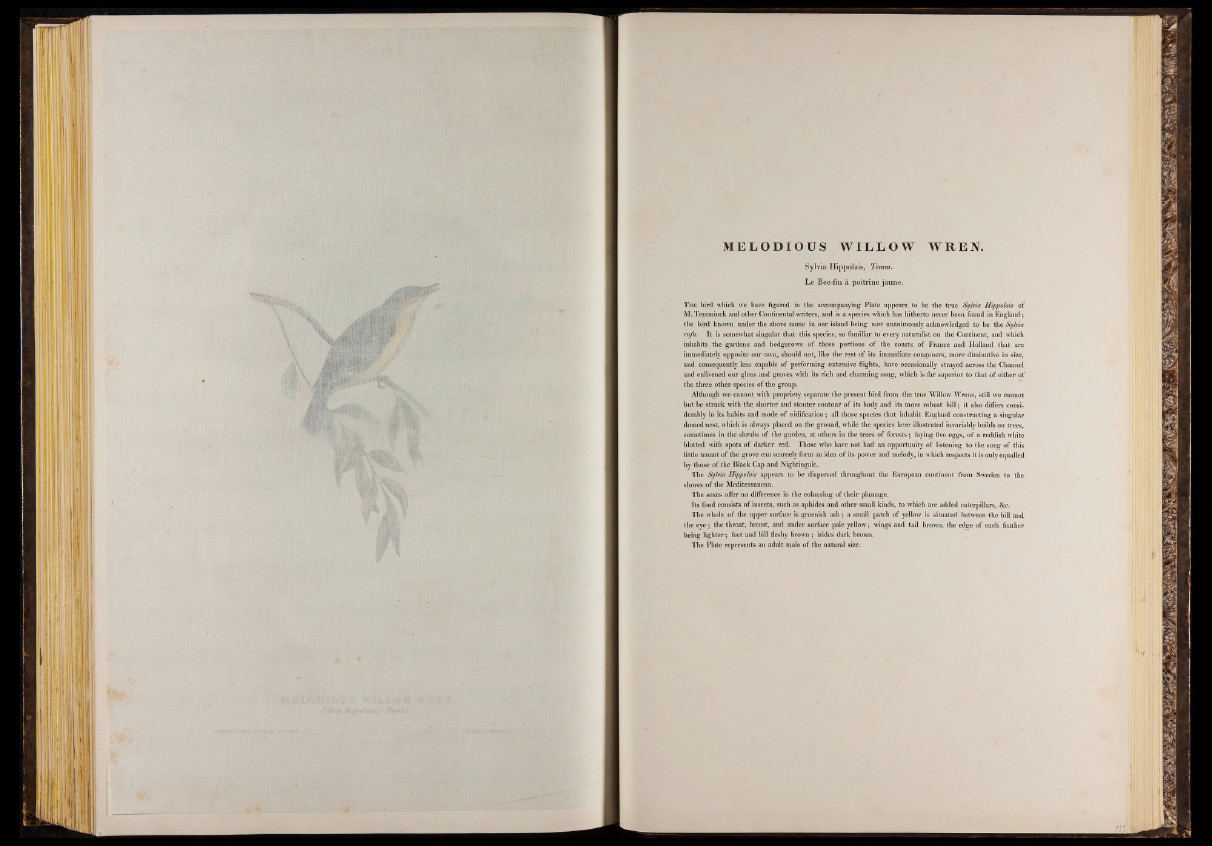
fl
SilWi
JHP
ME LOD IOUS WI L L OW WREN.
Sylvia Hippolais, Temm.
Le Bec-fin & poitrine jaune.
T he bird which we have figured in the accompanying Plate appears to be the true Sylvia Hippolais of
M. Temminck and other Continental writers, and is a species which has hitherto never been found in England;
the bird known under the above name in our island being now unanimously acknowledged to be the Sylvia
rufa. It is somewhat singular that this species, so familiar to every naturalist on the Continent, and which
inhabits the gardens and hedgerows of those portions of the coasts of France and Holland that are
immediately opposite our own, should not, like the rest of its immediate congeners, more diminutive in size,
and consequently less capable of performing extensive flights, have occasionally strayed across the Channel
and enlivened our glens and groves with its rich and charming song, which is far superior to that of either of
the three other species of the group.
Although we cannot with propriety separate the present bird from the true Willow Wrens, still we cannot
but be struck with the shorter and stouter contour of its body and its more robust bill; it also differs considerably
in its habits and mode of nidification: all those species that inhabit England constructing a singular
domed nest, which is always placed on the ground, while the species here illustrated invariably builds on trees,
sometimes in the shrubs of the garden, at others in the trees of forests; laying five eggs, of a reddish white
blotted with spots of darker red. Those who have not had an opportunity of listening to the song of this
little tenant of the grove can scarcely form an idea of its power and melody, in which respects it is only equalled
by those of the Black Cap and Nightingale.
The Sylvia Hippolais appears to be dispersed throughout the European continent from Sweden to the
shores of the Mediterranean.
The sexes offer no difference in the colouring of their plumage.
Its food consists of insects, such as aphides and other small kinds, to which are added caterpillars, &c.
The whole of the upper surface.is greenish ash; a small patch of yellow is situated between the bill and
the eye; the throat, breast, and under surface pale yellow; wings and tail brown, the edge of each feather
being lighter; feet and bill fleshy brown; irides dark brown.
The Plate represents an adult male of the natural size.